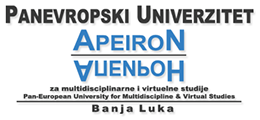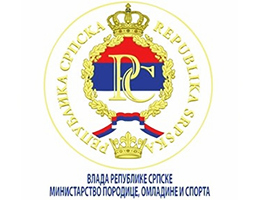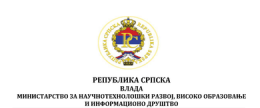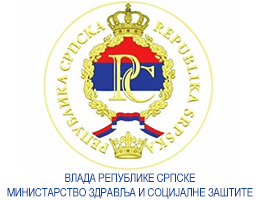EFFECTIVENESS OF THE OUTDOOR LEARNING MODEL CONTAINING LOCAL CULTURE ON CHILDREN’S GROSS MOTOR SKILLS
Volume 15, Issue V (2025)
Volume 15, Issue V (2025)
EFFECTIVENESS OF THE OUTDOOR LEARNING MODEL CONTAINING LOCAL CULTURE ON CHILDREN’S GROSS MOTOR SKILLS
Abstract:
Outdoor learning is a model of learning conducted outside the classroom through direct utilization of the environment that provides authentic and concrete experiences for children. These experiences allow children to receive stimuli that can expand the learning environment and allow the development of various domains of child development. This study aims to examine the effectiveness of outdoor learning model with local culture on gross motor skills. The type of experimental research used in this study is quasi experimental research with the assumption that this study cannot fully control the variables that will affect the results of this study later. In this case, the sample was selected from a population that was not randomized because the subjects were already formed in class groups. The sample in this study were children aged 5-6 years with a total sample size of 42 children who were divided into two groups, namely the experimental group and the control group. Data collection instruments in the form of observation sheets. The data obtained were then analyzed statistically using an independent t-test on the SPSS.16 program to see the difference between the experimental group and the control group. The results showed that there was a difference between the experimental group using the outdoor learn- ing model with local culture and the control group using the expository method with a value of 0.000 <0.05. This means that the outdoor learning model is effective in improving gross motor skills. Based on the findings, this study recommends teacher training in using outdoor learning model with local culture through new ways to improve gross motor development.
Keywords:
children aged 5-6 years, gross motor skills, local culture, outdoor learning model
Full Text:
References:
Aoyama, T., Hikihara, Y., Watanabe, M., Wakabayashi, H., Hanawa, S., Omi, N., Takimoto, H., & Tanaka, S. (2023). Infant gross motor de- velopment and childhood physical activity: Role of adiposity. JSAMS Plus, 2, 100021. https://doi.org/10.1016/j.jsampl.2023.100021
Bardid, F., Huyben, F., Lenoir, M., Seghers, J., Martelaer, K. D., Goodway, J. D., & Deconinck, F. J. A. (2016). Assessing fundamental motorskills in Belgian children aged 3-8 years highlights the differences to the US reference sample. Acta Pædiatrica, 105(6), e281-e290. https://doi.org/10.1111/apa.13380
Bardid, F., Rudd, J. R., Lenoir, M., Polman, R., & Barnett, L. M. (2015). Cross-cultural comparison of motor competence in children from Australia and Belgium. Frontiers in Psychology, 6, 964. https://doi.org/10.3389/fpsyg.2015.00964
Barros, W. M. A., da Silva, K. G., Silva, R. K. P., Souza, A. P. d. S., da Silva, A. B. J., Silva , M. R. M., Fernandes, M. S. d. S., de Souza, S. L., & Souza, V. d. O. N. (2022). Effects of overweight/obesity on motor performance in children: A systematic review. Frontiers in Endocrinology, 12, 759165. https://doi.org/10.3389/fendo.2021.759165
Becker, C., Lauterbach, G., Spengler, S., Dettweiler, U., & Mess, F. (2017). Effects of regular classes in outdoor education settings: A system- atic review on students’ learning, social and health dimensions. International Journal of Environmental Research and Public Health, 14, 485. https://doi.org/10.3390/ijerph14050485
Calero-Morales, S., Vinueza-Burgos, G. d. C., Yance-Carvajal, C. L., & Paguay-Balladares, W. J. (2023). Gross motor development in pre- schoolers through conductivist and constructivist physical recreational activities: Comparative research. Sports, 11(3), 61. https://doi. org/10.3390/sports11030061
Castaño, P. R. L., Suárez, D. P. M., & Tovani-Palone, M. R. (2019). Association of risk factors with the development of gross motor skills.
Electronic Journal of General Medicine, 16(5), em153. https://doi.org/10.29333/ejgm/112296
Dapp, L. C., Gashaj, V., & Roebers, C. M. (2021). Physical activity and motor skills in children: A differentiated approach. Psychology of Sport and Exercise, 54, 101916. https://doi.org/10.1016/j.psychsport.2021.101916
Deschamps, A., Scrutton, R., & Ayotte-Beaudet, J-P. (2022). School-based outdoor education and teacher subjective well-being: An explor- atory study. Frontiers in Education, 7, 961054. https://doi.org/10.3389/feduc.2022.961054
Escolano-Pérez, E., Sánchez-López, C. R., & Herrero-Nivela, M. L. (2021). Early environmental and biological influences on preschool motor skills: Implications for early childhood care and education. Frontiers in Psychology, 12, 725832. https://doi.org/10.3389/ fpsyg.2021.725832
Fu, T., Zhang, D., Wang, W., Geng, H., Lv, Y., Shen, R., & Bu, T. (2022). Functional training focused on motor development enhances gross motor, physical fitness, and sensory integration in 5-6-year-old healthy Chinese children. Frontiers in Pediatrics, 10, 936799. https:// doi.org/10.3389/fped.2022.936799
Ghazavi, Z., Abdeyazdan, Z., Shiravi, E., & Talakob, S. (2015). Developmental skills of 36-60-month-old children in Isfahan daycare centers in 2013. Iranian Journal of Nursing and Midwifery Research, 20(5), 594-598. https://doi.org/10.4103/1735-9066.164511
Haugen, T., & Johansen, B. T. (2018). Difference in physical fitness in children with initially high and low gross motor competence: A ten-year follow-up study. Human Movement Science, 62, 143-149. https://doi.org/10.1016/j.humov.2018.10.007
Honrubia-Montesinos, C., Gil-Madrona, P., & Losada-Puente, L. (2021). Motor development among Spanish preschool children. Children, 8(41). https://doi.org/10.3390/children8010041
Houwen, S., Visser, L., van der Putten, A., & Vlaskamp, C. (2016). The interrelationships between motor, cognitive, and language development in children with and without intellectual and developmental disabilities. Research in Developmental Disabilities, 53-54, 19-31. http:// dx.doi.org/10.1016/j.ridd.2016.01.012
Hussain, B., & Cheong, J. P. G. (2022). Improving gross motor skills of children through traditional games skills practiced along the contextual interference continuum. Frontiers in Psychology, 13, 986403. https://doi.org/10.3389/fpsyg.2022.986403
Iivonen, S., & Sääkslahti, A.K. (2013). Preschool children’s fundamental motor skills: A review of significant determinants. Early Child De- velopment and Care, 184(7), 1107-1126. https://doi.org/10.1080/03004430.2013.837897
Johnstone, A., McCrorie, P., Cordovil, R., Fjørtoft, I., Iivonen, S., Jidovtseff, B., Lopes, F., Reilly, J. J., Thomson, H., Wells, V., & Martin, A. (2022). Nature-based early childhood education and children’s physical activity, sedentary behaviour, motor competence and other physical health outcomes: A mixed-methods systematic review. Journal of Physical Activity and Health, 19(6), 456-472. https://doi. org/10.1123/jpah.2021-0760
Katagiri, M., Ito, H., Murayama, Y., Hamada, M., Nakajima, S., Takayanagi , N., Uemiya, A., Myogan, M., Nakai, A., & Tsujii, M. (2021). Fine and gross motor skills predict later psychosocial maladaptation and academic achievement. Brain & Development, 43(5), 605-615. https://doi.org/10.1016/j.braindev.2021.01.003
Liu, T., Hoffmann, C., & Hamilton, M. (2017). Motor skill performance by low SES preschool and typically developing children on the PDMS-
2. Early Childhood Education Journal, 45(1), 53-60. https://link.springer.com/article/10.1007/s10643-015-0755-9
Loebach, J., & Cox, A. (2022). Playing in ‘The Backyard’: Environmental features and conditions of a natural playspace which support diverse outdoor play activities among younger children. International Journal of Environmental Research and Public Health, 19(19), 12661. https://doi.org/10.3390/ijerph191912661
Lubans, D. R., Morgan, P. J., Cliff, D. P., Barnett, L. M., & Okely, A. D. (2010). Fundamental movement skills in children and adolescents.
Sports Medicine, 40(12), 1019-1035. https://doi.org/10.2165/11536850-000000000-00000
Martin, A., Clarke, J., Johnstone, A., McCrorie, P., Langford, R., Simpson, S. A., & Kipping, R. (2023). A qualitative study of parental strate- gies to enable pre-school children’s outdoor and nature experiences during COVID-19 restrictions. Health and Place, 79, 102967. https://doi.org/10.1016/j.healthplace.2023.102967
McFarland, L., & Laird, S. G. (2018). Parents’ and early childhood educators’ attitudes and practices in relation to children’s outdoor risky play.
Early Childhood Education Journal, 46, 159-168. https://doi.org/10.1007/s10643-017-0856-8
Øksendal, E., Brandlistuen, R. E., Holte, A., & Wang, M. V. (2022). Associations between poor gross and fine motor skills in pre-school and peer victimization concurrently and longitudinally with follow-up in school age-results from a population-based study. British Journal of Educational Psychology, 92(2), 557-575. https://doi.org/10.1111/bjep.12464
Ozturk, Y., & Ozer, Z. (2021). Outdoor play activities and outdoor environment of early childhood education in Turkey: A qualitative meta- synthesis. Early Child Development and Care, 192(11), 1752-1767. https://doi.org/10.1080/03004430.2021.1932865
Palmer, K. K., Chinn, K. M., Robinson, L. E. (2019). The effect of the CHAMP intervention on fundamental motor skills and outdoor physical activity in preschoolers. Journal of Sport and Health Science, 8(2), 98-105. https://doi.org/10.1016/j.jshs.2018.12.003
Pirchio, S., Passiatore, Y., Panno, A., Cipparone, M., & Carrus, G. (2021). The effects of contact with nature during outdoor environmental edu- cation on students’ wellbeing, connectedness to nature and pro-sociality. Frontiers in Psychology, 12, 648458. https://doi.org/10.3389/ fpsyg.2021.648458
Sääkslahti, A., & Niemistö, D. (2021). Outdoor activities and motor development in 2–7-year-old boys and girls. Journal of Physical Education and Sport, 21(1), 463-468. http://dx.doi.org/10.7752/jpes.2021.s1047
Sajedi, F., Vameghi, R., Mujembari, A. K. (2014). Prevalence of undetected developmental delays in Iranian children. Child: Care, Health and Development, 40(3), 379-388. https://doi.org/10.1111/cch.12042
Sandseter, E. B. H., Cordovil, R., Hagen, T. L., & Lopes, F. (2019). Barriers for outdoor play in early childhood education and care (ECEC) institutions: Perception of risk in children’s play among European parents and ECEC practitioners. Child Care in Practice, 26(5), 1-19. https://doi.org/10.1080/13575279.2019.1685461
Saraiva, L., Rodrigues, L. P., Cordovil, R., & Barreiros, J. (2013). Influence of age, sex and somatic variables on the motor performance of pre-school children. Annals of Human Biology, 40(5), 444-450. https://doi.org/10.3109/03014460.2013.802012
Stodden, D. F., Goodway, J. D., Langendorfer, S. J., Roberton, M. A., Rudisill, M. E., Garcia, C., & Garcia, L. E. (2008). A developmental perspective on the role of motor skill competence in physical activity: An emergent relationship. Quest, 60(2), 290-306. https://doi.or g/10.1080/00336297.2008.10483582
Su, H., Yang, G., Yang, M., & Chang, J. (2022). Fundamental motor skills intervention for school-age children: A systematic review and meta- analysis. International Journal of Human Movement and Sports Sciences 10(4), 644-653. https://doi.org/10.13189/saj.2022.100403
Susanto, S. et al. (2022). Traditional Sport-Based Physical Education Learning Model in Character Improvement and Critical Thinking of Elementary School Students. SPORTS SCIENCE AND HEALTH, 24(2), 165-172.
Susanto, S., Setyawan, H., García-Jiménez, J. V., Pavlovic, R., Nowak, A. M., & Susanto, N. (2024). Analysis of One-Hole Game Tools in Developing Fine Motor Skills in Early Childhood. SPORTS SCIENCE AND HEALTH, 27(V), 135-139.
Susanto, S., Setyawan, H., Susanto, N., García-Jiménez, J. V., Latino, F., Tafuri, F., & Eken, Ö. (2024). The Influence of Modified One-Hole Game Media in Improving Fine Motor Skills in Early Childhood. SPORTS SCIENCE AND HEALTH, 27(V), 151-156.
Susanto, S. (2024). The Effect of Using a Paralon Bow on the Archery Performance of Novice Athletes. Innovative: Journal Of Social Science Research, 4(3), 11185-11197.
Tortella, P., Ceciliani, A., Fumagalli, G., Jidovtseff, B., Wainwright, N., Fjortoft, I., Sigmundsson, H., Haga, M., Sgrò, F., Lipoma, M., & Sääkslahti, A. (2021). Children’s outdoor movement education: Position statement. Journal of Physical Education and Sport, 21(1), 451-462. http://dx.doi.org/10.7752/jpes.2021.s1046
Traynor, O., McCrorie, P., Chng, N. R., & Martin, A. (2022). Evaluating outdoor nature-based early learning and childcare provision for chil- dren aged 3 years: Protocol of a feasibility and pilot quasi-experimental design. International Journal of Environmental Research and Public Health, 19(12), 7461. https://doi.org/10.3390/ijerph19127461
Truelove, S., Bruijns, B. A., Vanderloo, L. M., O’Brien, K. T., Johnson, A. M., & Tucker, P. (2018). Physical activity and sedentary time during childcare outdoor play sessions: A systematic review and meta-analysis. Preventive Medicine, 108, 74-85. https://doi.org/10.1016/j. ypmed.2017.12.022
Valla, L., Wentzel-Larsen, T., Hofoss, D., & Slinning, K. (2015). Prevalence of suspected developmental delays in early infancy: Results from a regional population-based longitudinal study. BMC Pediatrics, 15(1), 215-222. https://doi.org/10.1186/s12887-015-0528-z
van der Walt, J., Plastow, N. A., & Unger, M. (2020). Motor skill intervention for pre-school children: A scoping review. African Journal of Disability, 9, 747. https://doi.org/10.4102/ajod.v9i0.747
Vanderloo, L. M., Tucker, P., Johnson, A. M., Burke, S. M., & Irwin, J. D. (2015). Environmental influences on preschoolers’ physical activity levels in various early-learning facilities. Research Quarterly for Exercise and Sport, 86(4), 360-370. http://dx.doi.org/10.1080/0270 1367.2015.1053105
Veldman, S. L. C., Santos, R., Jones, R. A., Sousa-Sá, E., & Okely, A. D. (2019). Associations between gross motor skills and cognitive devel- opment in toddlers. Early Human Development, 132, 39-44. https://doi.org/10.1016/j.earlhumdev.2019.04.005
Veldman, S. L., Jones, R. A., Chandler, P., Robinson, L. E., & Okely, A. D. (2020). Prevalence and risk factors of gross motor delay in pre- schoolers. Journal of Paediatrics and Child Health, 56(4), 571-576. https://doi.org/10.1111/jpc.14684
Wei, Q. W., Zhang, J. X., Scherpbier, R. W., Zhao, C. X., Luo, S. S., Wang, X. L., & Guo, S. F. (2015). High prevalence of developmental delay among children under three years of age in poverty-stricken areas of China. Public Health, 129(12), 1610-1617. https://doi. org/10.1016/j.puhe.2015.07.036
Yaghini, O., Kelishadi, R., Keikha, M., Niknam, N., Sadeghi, S., Najafpour, E., & Ghazavi, M. (2015). Prevalence of developmental de- lay in apparently normal preschool children in Isfahan, Central Iran. Iranian Journal of Child Neurology, 9(3), 17-23. https://doi. org/10.22037/ijcn.v9i3.7355
Yew, W. C., Kong, S. M., Awang, A. H., & Yi, G. R. (2022). Developing a conceptual model for the causal effects of outdoor play in preschools using PLS-SEM. Sustainability, 14(6), 3365. https://doi.org/10.3390/su14063365
Yıldırım, G., & Akamca, G. Ö. (2017). The effect of outdoor learning activities on the development of preschool children. South African Jour- nal of Education, 37(2), 1-10. http://dx.doi.org/10.15700/saje.v37n2a1378






